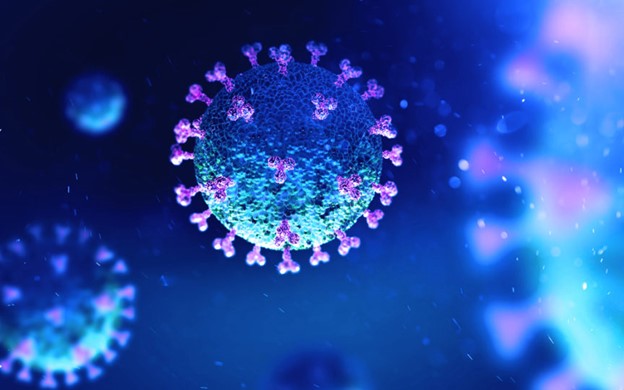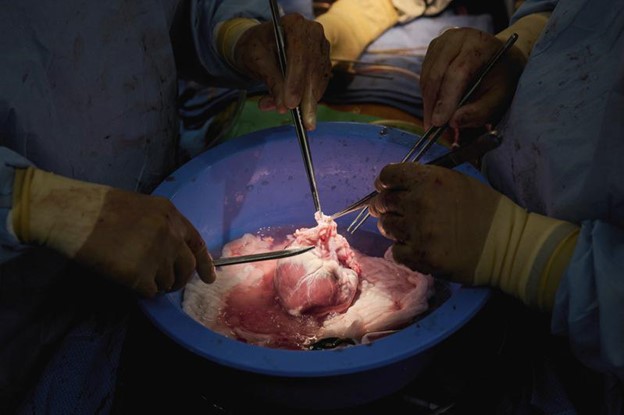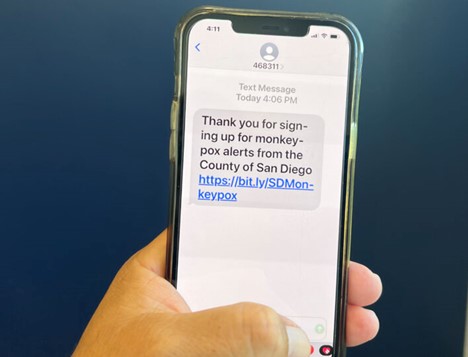【《We Chinese in America》Media Editor Tang Zhao, August 5, 2022】Per County of San Diego Communications Office, COVID-19 activity remains high in the region, the County Health and Human Services Agency reported today. The Centers for Disease Control and Prevention moved San Diego County to the high-risk level for COVID-19 three weeks ago and cases continue to trend high. (Photo credit: County of San Diego Communications Office)
The CDC’s high-risk community level means COVID-19 is widespread throughout the region and San Diegans should continue taking precautions to slow the spread of the virus. You should:
- Wear a mask indoors when in public,
- Get all the vaccine doses and boosters,
- Stay home if you are sick and get tested,
- Avoid crowded places, and
- Take other precautions, such as washing your hands and staying away from people who are visibly sick.
The County continues to follow the California Department of Public Health’s SMARTER plan, which recommends vaccination, use of masks, testing and treatment among other things.
“San Diegans should do what they can to slow the spread of COVID-19,” said Wilma J. Wooten, M.D., M.P.H., County public health officer. “If you feel sick, stay home, get tested for COVID-19 and talk to your doctor about treatment options.”
Got COVID? Get Treatment
Treatment is available and can help prevent severe infection, but it is important to seek help as soon as possible to see if it’s right for you.
Treatment centers and medical offices in the region may offer oral antiviral pills, such as Paxlovid and/or monoclonal antibodies delivered as an intravenous infusion. A provider will determine what treatment option is best for each individual patient based on their symptoms, age and potential underlying conditions.
Treatment is available to individuals who meet the U.S. Food and Drug Administration’s guidelines for the medications, including those who are at high risk for developing severe COVID-19:
- Adults age 50 or older,
- People of color,
- Lower economic status,
- People with underlying condition(s), and
- Unvaccinated San Diegans.
To determine which treatment is best for you, talk to your doctor or health care provider, or call 2-1-1 to find a provider.
Vaccination Progress:
- Received at least one shot: Over 3.0 million or 89.9% of San Diegans age six months and older are at least partially vaccinated.
- Fully vaccinated: Close to 2.66 million or 79.4%.
- Boosters administered: 1,424,581 or 58.5% of 2,435,363 eligible San Diegans.
- More vaccination information can be found at coronavirus-sd.com/vaccine.
Deaths:
- 15 additional deaths were reported since the last report on July 28. The region’s total is 5,424.
- Of the 15 additional deaths, six were women and nine were men. They died between July 11 and July 31, 2022; 14 deaths occurred in the past two weeks.
- Six of the people who died were 80 years or older, eight were in their 70s and one was in their 60s.
- 13 were fully vaccinated and two were not.
- 13 had underlying medical conditions and two had medical history pending.
Cases, Case Rates and Testing:
- 3,728 COVID-19 cases were reported to the County in the past three days (Aug. 1 to Aug. 3, 2022). The region’s total is now 891,394.
- 9,495 cases were reported in the past week (July 28 through Aug. 3) compared to 11,362 infections identified the previous week (July 21 through July 27).
- San Diego County’s case rate per 100,000 residents 12 years of age and older is 56.80 for people fully vaccinated and boosted, 36.79 for fully vaccinated people and 111.77 for not fully vaccinated San Diegans.
- 8,942 tests were reported to the County on July 30, and the percentage of new positive cases was 13.7% (Data through July 30).
- The 14-day rolling percentage of positive cases, among tests reported through July 30, is 14.4%.
(Source: County of San Diego Communications Office)
This website has a free subscription function, please enter your email address and name (any nickname) in the upper right corner of the page. After subscribing, you can receive timely updates of the website. I hope that new and old readers will actively subscribe, so that we have the opportunity to provide you with better services
Please click: Home (wechineseus.com) for more news and content on this website
Follow The Chinese Media's Twitter account: https://twitter.com/wechineseinus
Follow The Chinese Media's Facebook account: https://www.facebook.com/wechineseinamerica/
【《We Chinese in America》Media Editor Tang Zhao, August 5, 2022】The Yale University research team successfully "resurrected cells" and "restored function" of organs in dead pigs in experiments. The picture shows a genetically modified pig heart. (Associated Press)
The latest research results published by the Yale University research team in the journal "Nature" on the 3rd have made the scientific community begin to rethink "the line between life and death"; this experiment successfully "revived" dead pig cells and "recovered organs" The main purpose of the research is to enable the medical community to obtain "viable organs" for a long time after the death of patients in the future, and more human organs can be used for organ transplantation.
The New York Times reported that scientists at Yale University used a heart-lung machine-like device to inject a special solution called OrganEx into the dead pigs that had been dead for an hour in the laboratory. Although the pigs had no blood circulation, a still heart, flat brain waves, and were thought to have no consciousness, their seemingly dead cells were "revived" after infusion with OrganEx's special solution, their hearts began to beat, and the solution in the veins and arteries In the mid-circulation, organ cells such as the heart, liver, kidneys and brain all return to function, and the body is not as rigid as a typical dead pig.
On the other hand, if other pigs died for an hour, if they received the treatment of "Ekeme" (official name is Extracorporeal Membrane Oxygenation, ECMO), the body will become stiff, the organs will be swollen and damaged, the blood vessels will collapse, and there will be purple spots on the back.
The findings are still just the first steps, and the technology is "very far from being used in humans," said Yale bioethicist Stephen Latham, who worked closely with the research team.
But a team led by Nenad Sestan, a professor of neuroscience, comparative medicine, genetics and psychiatry at the Yale School of Medicine, was struck by the technology's ability to revive cells; co-author of the paper, Yale Neuroscience "The recovery of all this is incredible," said scientist David Andrijevic.
Others unrelated to the study were similarly surprised. "This study raises questions about the definition of death," said Nita Farahany, a Duke University law professor who studies the ethical, legal and societal implications of emerging technologies. "We think of death as a state of being; is there a 'reversible form of death'.
The research work began a few years ago, when the team first conducted a similar experiment on the brains of dead pigs in the slaughterhouse. Four hours after the pigs died, they injected a solution called BrainEx, similar to OrganEx, and saw that the dead brain cells could be resurrected. Start exploring if it's possible to restore the entire body.
OrganEx solution contains nutrients, anti-inflammatory drugs, drugs to prevent cell death, "nerve blockers" that inhibit neuronal activity and prevent pigs from regaining consciousness, and artificial hemoglobin that mixes the animal's own blood.
Yale has applied for a patent for this technology. The next step, says Seton, is to see if the organ functions properly and can be transplanted successfully; the researchers also hope to further test whether the approach can repair damaged hearts or brains.
Robert Porte, a transplant surgeon at the University of Groningen in the Netherlands, commented in the journal "Nature" that if OrganEx can revitalize organs, the effect "will be huge" and the number of organs available for transplantation will greatly increase.
OrganEx raises "tough questions about life and death," said Brendan Parent, director of transplant ethics and policy research at NYU Grossman School of Medicine, noting that "according to accepted medical and legal definitions of death, these pigs have been dead; the key question now is: what function will change this?”
If the researchers didn't use the neuroleptics in the solution, and the pigs' brains returned to function, would the pigs still be dead? If the goal is to preserve the organ for transplantation, and the pig regains a certain level of consciousness in the process, ethical issues arise.
(Source: World News Network)
This website has a free subscription function, please enter your email address and name (any nickname) in the upper right corner of the page. After subscribing, you can receive timely updates of the website. I hope that new and old readers will actively subscribe, so that we have the opportunity to provide you with better services
Please click: Home (wechineseus.com) for more news and content on this website
Follow The Chinese Media's Twitter account: https://twitter.com/wechineseinus
Follow The Chinese Media's Facebook account: https://www.facebook.com/wechineseinamerica/

【《We Chinese in America》Media Editor Tang Zhao, August 2, 2022】As an ongoing effort to enhance our valuable service to We Chinese in America website readers, We Chinese in America website posts English and Chinese versions of “IRS News Release” , “IRS Fact Sheets”, and “tax tips” directly received from IRS Media Relations Office in Washington, D.C.. We are pleased to take on this important role partnering with IRS to better inform the public.
Basic things all businesses should know about excise tax
Tax Tip 2022-116
August 1, 2022
Excise tax is an indirect tax on specific goods, services and activities. Federal excise tax is usually imposed on the sale of things like fuel, airline tickets, heavy trucks and highway tractors, indoor tanning, tires, tobacco and other goods and services.
Businesses that are subject to excise tax generally must file a Form 720, Quarterly Federal Excise Tax Return to report the tax to the IRS.
This tax is commonly included in the cost of the product. While the end consumer doesn’t usually see the excise tax on their receipt, it may be charged at the time of
- Import
- Sale by the manufacturer
- Sale by the retailer
- Use by the manufacturer or consumer
Many excise taxes go into trust funds for projects related to the taxed product or service, such as highway and airport improvements. Excise taxes are independent of income taxes. Often, the retailer, manufacturer or importer must pay the excise tax to the IRS and file the Form 720.
Some excise taxes are collected by a third party. The third party then sends the tax to the IRS and files the Form 720. For example, the tax on an airline ticket generally is paid by the purchaser and collected by the airline.
When to file
Businesses must file the form for each quarter of the calendar year. Here are the due dates:
- Quarter 1 – January, February, March: deadline, April 30
- Quarter 2 – April, May, June: deadline, July 31
- Quarter 3 – July, August, September: deadline, Oct. 31
- Quarter 4 – October, November, December: deadline, Jan. 31
If the deadline for filing a tax return falls on a Saturday, Sunday or legal holiday, the due date is the next business day.
How to file
The IRS does accept paper excise tax returns. However, electronic filing is strongly encouraged, when possible. To make this process easier for taxpayers, the contact information for all approved e-file transmitters of excise forms is listed on IRS.gov. Businesses can submit forms online 24 hours a day.
When businesses e-file, they get confirmation that the IRS received their form. Also, e-filing reduces processing time and errors. To electronically file, business taxpayers will have to pay the provider's fee for online submission.
The excise tax forms available for electronic filing are:
Form 720, Quarterly Federal Excise Tax Return
Form 2290, Heavy Highway Vehicle Use Tax
Form 8849, Claim for Refund of Excise Taxes, Schedules 1, 2, 3, 5, 6 and 8
(Source: IRS Tax Tips)
Internal Resource Service
Media Relation Office
Washington, D. C
Media Contact: 202 317 4000
Public Contact: 800 829 1040
This website has a free subscription function, please enter your email address and name (any nickname) in the upper right corner of the page. After subscribing, you can receive timely updates of the website. I hope that new and old readers will actively subscribe, so that we have the opportunity to provide you with better services
Please click: Home (wechineseus.com) for more news and content on this website
Follow The Chinese Media's Twitter account: https://twitter.com/wechineseinus
Follow The Chinese Media's Facebook account: https://www.facebook.com/wechineseinamerica/
A New Street Mural in the Asian Pacific Thematic Historic District of Downtown San Diego
【《We Chinese in America》Media Editor Tang Zhao, August 4, 2022】 Per DOWNTOWN SAN DIEGO PARTNERSHIP CLEAN & SAFE, " Downtown San Diego Partnership is delighted to announce the selection of Thao French and Janelle Louie as the artist team chosen to design a new street mural in the Asian Pacific Thematic Historic District of Downtown San Diego. (Image credit: Wikipedia)
Thao is a Vietnamese artist representing Mindful Murals, an AAPI owned business, and Janelle is a modern-day Chinese American fisherwoman and local artist.
They were among 13 artist teams that submitted applications to our call for artists released earlier this year.
We look forward to working with Thao and Janelle, as well as our partners, the San Diego Chinese Historical Museum and the Chinese Consolidated Benevolent Association, on bringing a work of art that celebrates San Diego’s AAPI community."
Source : DOWNTOWN SAN DIEGO PARTNERSHIP CLEAN & SAFE
This website has a free subscription function, please enter your email address and name (any nickname) in the upper right corner of the page. After subscribing, you can receive timely updates of the website. I hope that new and old readers will actively subscribe, so that we have the opportunity to provide you with better services
Please click: Home (wechineseus.com) for more news and content on this website
Follow The Chinese Media's Twitter account: https://twitter.com/wechineseinus
Follow The Chinese Media's Facebook account: https://www.facebook.com/wechineseinamerica/
【《We Chinese in America》Media Editor Tang Zhao, August 1, 2022】Per County of San Diego Communications Office. San Diego County residents can now receive information about monkeypox via text thanks to the County public information text message alert system. (Photo credit: County of San Diego Communications Office)
The system allows County health officials to send real-time information about monkeypox in the region. To sign up to receive the messages, text COSD MONKEYPOX to 468-311.
The system was set up to let County public health officials issue timely information and instructions related to monkeypox in the San Diego region.
Limited Monkeypox Vaccine
The County continues to work with the lesbian, gay, bisexual, transgender, and queer community to develop messaging, education materials, and to administer the limited number of vaccines coming to the area.
Given the scarcity of the monkeypox vaccine and as guided by the California Department of Public Health, the County is focusing on delivering first doses to as many people at high risk as possible. For the current outbreak, that includes men who have sex with multiple male partners and close contacts of reported cases. The County’s approach is in line with strategies in other large jurisdictions with monkeypox outbreaks, including New York and San Francisco.
The state allocates vaccines to counties based on the number of monkeypox and syphilis cases in men reported in a region. To date, San Diego County has received about 2,200 doses and has 20 confirmed and probable cases. The region’s case count is updated each Friday afternoon on the website.
About Monkeypox
Monkeypox is a viral infection that can spread through contact with body fluids, sores on the body of someone who has monkeypox, or from shared items (e.g., clothing and bedding) that have been contaminated with fluids from sores of a person with monkeypox.
The disease can also spread between people through saliva or respiratory droplets, typically between people in a prolonged close setting. Although monkeypox is not generally considered a sexually transmitted disease, it can be transmitted during sex through skin-to-skin and other intimate contact, regardless of gender or sexual orientation, including close contact that may not be necessarily sexual.
Monkeypox Symptoms
Symptoms of monkeypox are similar to, but milder than, the signs and symptoms of smallpox, a related but extinct virus. They include:
- Fever
- Headache
- Muscle aches
- Backache
- Swollen lymph nodes
- Chills
- Exhaustion
- Rash
A rash usually develops within one to three days after the appearance of fever. This rash can look like pimples or blisters that appear on the face, inside the mouth, and on other parts of the body, like the hands, feet, chest, genitals, or anus.
Most people who develop monkeypox experience symptoms within seven to 14 days (and up to 21 days) after exposure.
Most people who become infected with monkeypox have a mild illness that improves without treatment over two to four weeks. Monkeypox is contagious and can spread to others once someone has symptoms from it and until scabs have fallen off and a new layer of skin has formed.
What People Should Do
Anyone who thinks they may have symptoms of monkeypox, including unusual rashes or lesions, should contact a healthcare provider right away or call 2-1-1 for more information.
You must have a rash, or spots, to get a monkeypox test. The monkeypox test is done on your skin with a swab at a clinic or health care provider. The swab is rubbed against spots on your skin, or parts of your rash, and then sent to a specialized lab for monkeypox testing. A preliminary lab test result is usually available within a few days.
Those waiting for results are asked to take steps to care for themselves and others. These include:
- Stay home and away from others.
- Put off travel on public transportation.
- Contact your sex partner(s) and people you have had close contact with since the start of your symptoms.
- Protect any pets.
Also consider using TellYourPartner.org to anonymously inform those you have had close contact with.
For more information on monkeypox, visit the County’s monkeypox website.
(Source: County of San Diego Communications Office)
This website has a free subscription function, please enter your email address and name (any nickname) in the upper right corner of the page. After subscribing, you can receive timely updates of the website. I hope that new and old readers will actively subscribe, so that we have the opportunity to provide you with better services
Please click: Home (wechineseus.com) for more news and content on this website
Follow The Chinese Media's Twitter account: https://twitter.com/wechineseinus
Follow The Chinese Media's Facebook account: https://www.facebook.com/wechineseinamerica/















